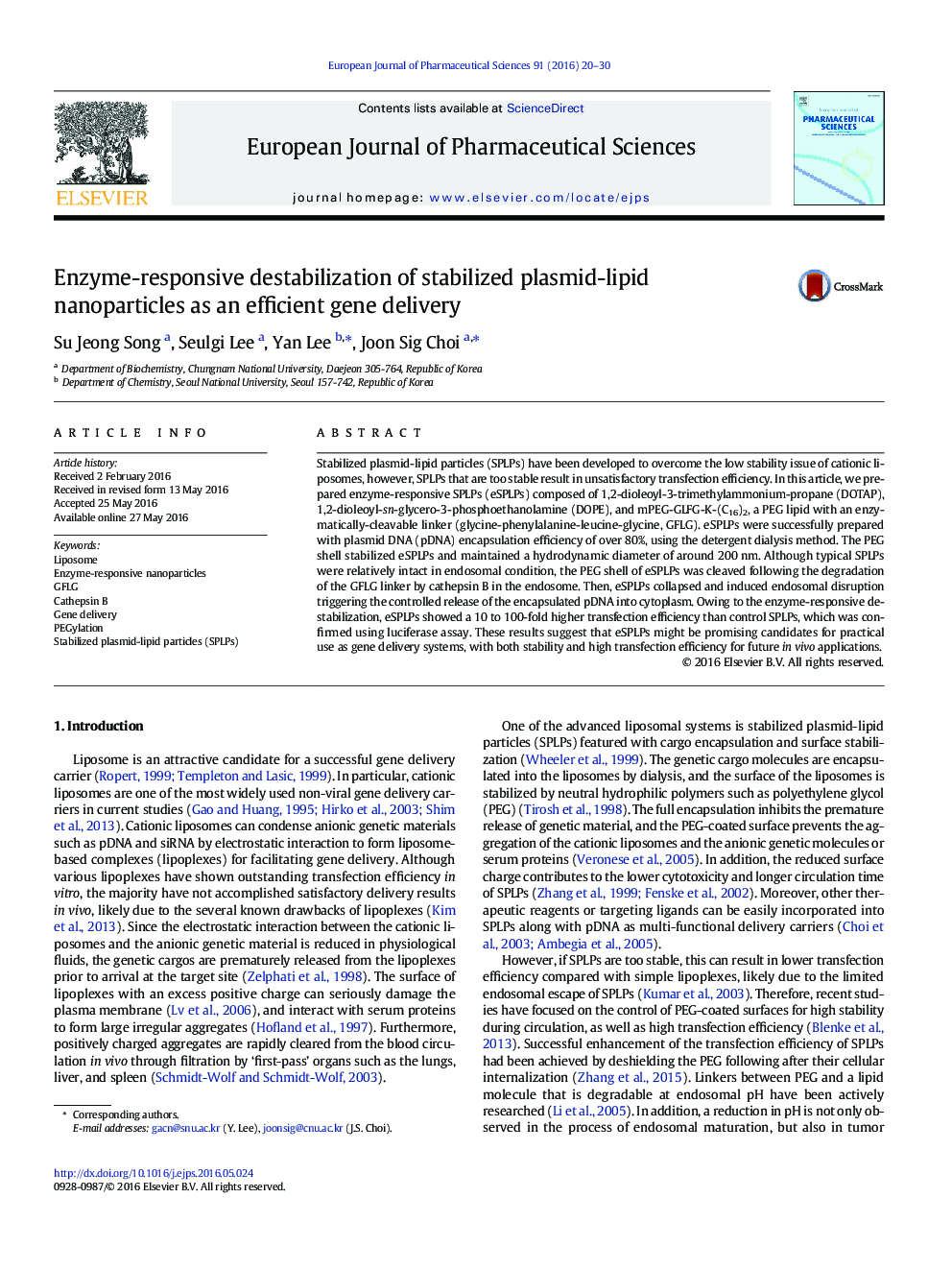| Article ID | Journal | Published Year | Pages | File Type |
|---|---|---|---|---|
| 5809493 | European Journal of Pharmaceutical Sciences | 2016 | 11 Pages |
Stabilized plasmid-lipid particles (SPLPs) have been developed to overcome the low stability issue of cationic liposomes, however, SPLPs that are too stable result in unsatisfactory transfection efficiency. In this article, we prepared enzyme-responsive SPLPs (eSPLPs) composed of 1,2-dioleoyl-3-trimethylammonium-propane (DOTAP), 1,2-dioleoyl-sn-glycero-3-phosphoethanolamine (DOPE), and mPEG-GLFG-K-(C16)2, a PEG lipid with an enzymatically-cleavable linker (glycine-phenylalanine-leucine-glycine, GFLG). eSPLPs were successfully prepared with plasmid DNA (pDNA) encapsulation efficiency of over 80%, using the detergent dialysis method. The PEG shell stabilized eSPLPs and maintained a hydrodynamic diameter of around 200Â nm. Although typical SPLPs were relatively intact in endosomal condition, the PEG shell of eSPLPs was cleaved following the degradation of the GFLG linker by cathepsin B in the endosome. Then, eSPLPs collapsed and induced endosomal disruption triggering the controlled release of the encapsulated pDNA into cytoplasm. Owing to the enzyme-responsive destabilization, eSPLPs showed a 10 to 100-fold higher transfection efficiency than control SPLPs, which was confirmed using luciferase assay. These results suggest that eSPLPs might be promising candidates for practical use as gene delivery systems, with both stability and high transfection efficiency for future in vivo applications.
Graphical abstractDownload high-res image (212KB)Download full-size image
